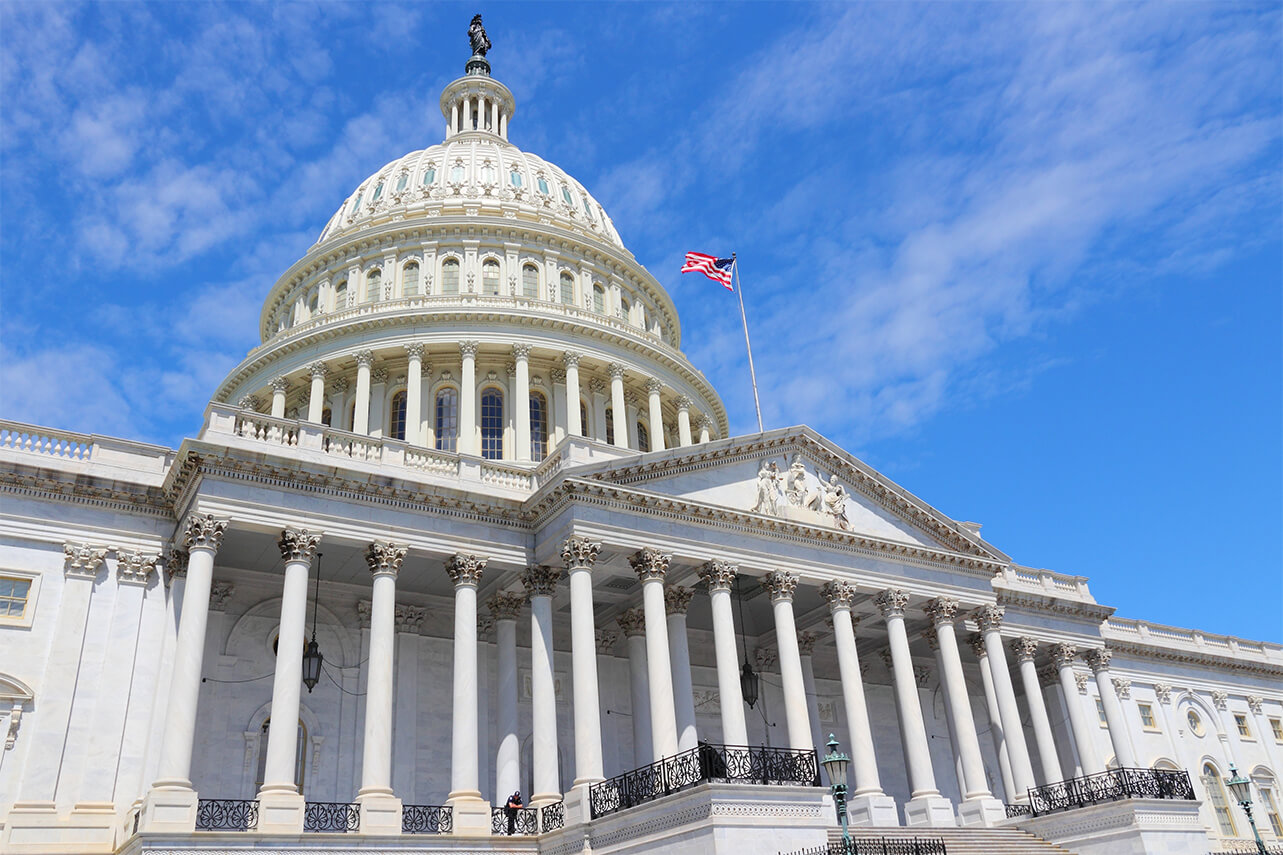By Sean Deverey, Director of Government Affairs, Iris Automation
Last week the U.S. House of Representatives passed the Transportation, Housing, and Urban Development (THUD) Appropriations bill for the Fiscal Year 2022. This annual appropriations legislation provides funding and related guidance to the Federal Aviation Administration (FAA). In it, Congress included language that would direct the FAA to continue to prioritize and make progress on the safe integration of beyond visual line of sight (BVLOS) drone operations.
Currently, commercial BVLOS drone operations are by-and-large only permitted to take place in the U.S. through case-by-case waivers issued under Part 107. This process is time consuming, resource intensive for applicants and the FAA, and highly subjective. In order for commercial applications and public safety operations to operate safely and at scale, the U.S. must transition to a rules and performance based regulatory framework. Our company has been engaging in an ongoing education campaign to inform Congress, the Executive Branch, and their staff on these issues and the importance of detect-and-avoid technology to ensure air safety in BVLOS operations.
With this THUD report language, the U.S. House of Representatives is sending a strong signal that Congress expects the FAA to move quickly and deliberately towards rulemaking for BVLOS drone operations. In the same vein, the FAA has recently demonstrated its continued commitment to rulemaking by kicking off an official BVLOS Aviation Rulemaking Committee (ARC). Iris Automation was selected by the FAA earlier this year to serve as a participating member of the ARC.
Having both Congress and the FAA actively prioritizing safe drone integration and BVLOS rules is an important signal to the industry that the long-awaited integration of drones into the National Airspace will soon become reality.
Language included in the House Bill:
On June 8, 2021, the FAA approved the creation of an aviation rulemaking committee (ARC) to help develop a regulatory path for routine beyond visual line of sight (BVLOS) operations. The ARC currently plans to submit its final report to the FAA by November 30, 2021. The Committee directs the FAA to brief the House and Senate Committees on Appropriations on the actions that it will take in response to the ARC’s recommendations not less than 120 days after the day that the FAA receives the ARC’s report. The Committee strongly encourages the FAA to complete BVLOS rulemakings by December 2023. In normalizing BVLOS operations, the FAA’s rulemakings should meet the public’s safety expectations, align responsibility with industry capabilities, apply existing regulatory concepts where appropriate, incorporate lessons learned from Partnership for Safety Plan and BEYOND programs, and standardize where possible. In the meantime, the Committee looks forward to the report required by the Consolidated Appropriations Act of 2021 (P.L. 116– 260) on how the FAA will address a number of complex safety concerns prior to allowing for BVLOS and directs the FAA to ensure the Part 107 waiver process addresses the needs of first responders.
To summarize, this legislation directs the FAA to do three important things:
1) Within 120 days of the FAA’s BVLOS ARC submitting their report, the FAA would be required to brief Congress on their plans for subsequent rulemaking pursuant to the ARC’s recommendations;
2) Strongly encourages the FAA to complete BVLOS rulemakings by December 2023;
3) Reiterates Congress’ expectation that the FAA produces a report to the House Appropriations Committee on a number of safety challenges to UAS BVLOS operations, specifically including the use of Detect-and-Avoid (DAA) for addressing air safety concerns.
The BVLOS regulatory environment continues to show strong forward momentum. Over the last year, both the FAA and Congress have shown an increased sense of urgency to achieve BVLOS standards so that scaling drone integration can happen across the United States.
Policymakers are increasingly concerned, and rightfully so, about being left behind as other countries move rapidly to incorporate drone technology for commercial and public safety applications. This has helped to encourage both legislative and regulatory action, in addition to consistent engagement with Congress, the Administration, and the FAA by the UAS industry and end-users.
Iris Automation strongly supports the leadership demonstrated by the FAA in forming the BVLOS ARC and the U.S. House Appropriations Committee through this and previous legislation. As a company, Iris Automation remains committed to educating policymakers both in the U.S. and abroad. We continue to engage with the FAA, Congress, and the Administration to ensure that the future BVLOS rules will prioritize air safety and provide a clear process to allow for operations at scale.
While regulatory progress can often appear slow and challenging, years of hard work by industry and regulators have laid the groundwork for BVLOS rules to come together. The FAA has also learned a lot through issuing waivers and through pilot programs such as the UAS Integration Pilot Program (IPP) and the ongoing BEYOND program. It is clear that once the BVLOS ARC has submitted their recommendations, both the FAA and Congress expect rulemaking to move forward with a sense of urgency. BVLOS rules and regulations are now visible on the horizon, and much closer than many people realize.

